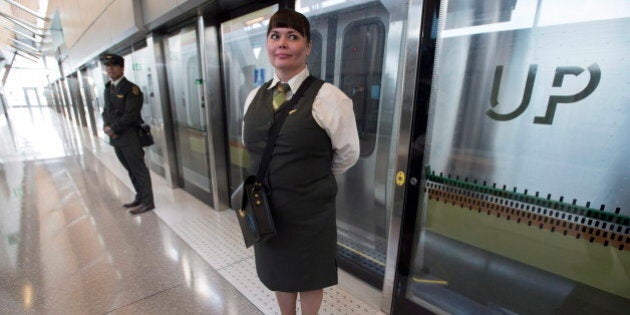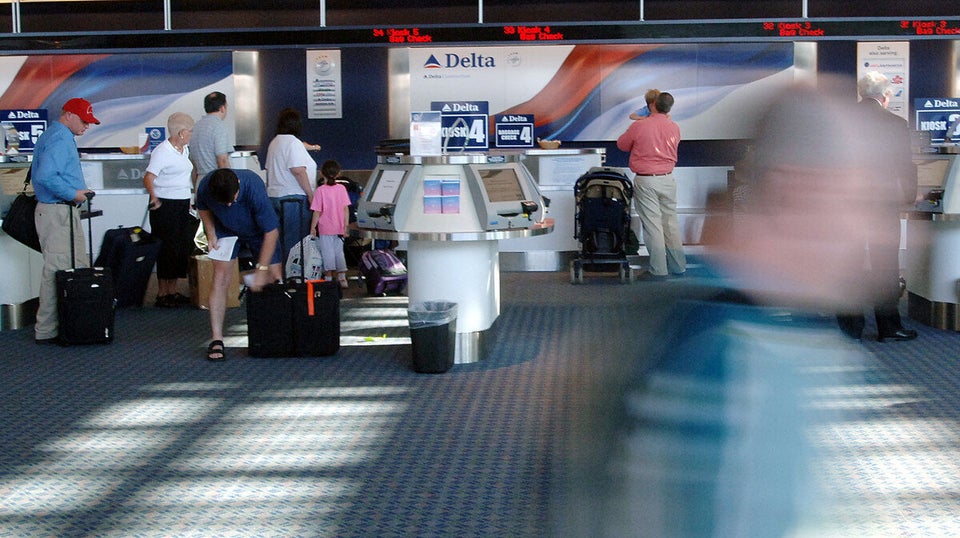
It has already been a decade since the huge explosion of social media shook and redefined my entire industry. Almost overnight, the most basic rules of persuasion were flipped on their head: marketing is no longer about talking to consumers; now the real art is about figuring out how to enable the conversations among consumers.
Unless, of course, you happen to be a public transportation agency in Ontario, launching an already outdated and incredibly overdue service into a world-class-wannabe boomtown, enjoying access to a limitless pot of public marketing funds and, apparently, having no real accountability or a need to demonstrate any real return for the things you build and do.
A few short weeks ago Toronto's "UP Express" airport link was launched to great and prolonged fanfare. The lead-up "marketing" campaign was truly endless and spectacularly old-fashioned: massive banners at the airport, newspaper ads, press interviews and even an uber-glitzy online video that created such outrage on social media (for being so over-the-top and so full of exaggerations and superlatives) that Metrolinx was eventually forced to take it down! That controversy and all the chatter about the ridiculous marketing hype and the uncontrollable (and clearly unaccountable) promotional spend for what should have simply been considered an essential urban service with unimaginable pent-up demand piqued my curiosity -- and I decided to take a little ride. Follow me on this journey of multi-layered disappointments...
It's around 5 p.m. on a weekday and, on our final approach into Pearson, Toronto's highways look spectacularly clogged from above. Decision made: I will break the habit and forego the privacy of a cab or airport limo in favour of trying out our uber-train. If all the Metrolinx posters and news articles are right, I might even get home faster this way.
Thankfully I have spotted the train before, perched up high on the side of the parking garage next to Terminal 1 -- and that's a very good thing, because otherwise I would have never been able to find it! There are absolutely no signs pointing to it inside the terminal and, in fact, the only signs for "Ground Transportation" would have actually taken me to the wrong place (to the sidewalk, where the limos and cabs were still hoping to lure me).
When I do find the train platform, I am immediately greeted by a very smiling young man who has endless time to devote to assisting me with my first-ever UP ticket purchase because he truly has nothing else to do and no one else to worry about (the place is empty!). He grills me about my travel habits and whether I would take the UP often because, as he claims, I would save "a lot of money" if I bought a Presto smart card instead of buying a paper ticket. Indeed, there is an almost 40 per cent difference between the cost of a UP ride if you're using a smart card vs. the retail cost -- a very odd clash of agendas, if you ask me (Is Metrolinx trying to promote use of its new train or adoption of their smart cards? Clearly they're not blending the two very well at all.)
Leaving that lonely, eager, smiling young man behind, I board this self-proclaimed example of revolutionary transportation technology and I am immediately struck by the sound of an idling diesel engine. Seriously? In my Toronto, in the year 2015? Are we really such lovers of retro and heritage that we're trying to re-introduce diesel locomotives to the world? Oh, and while I am being soothed by the hum of that awesome carbon-spewing piece of engineering innovation that was about to propel me all the way to downtown Toronto at unprecedented speeds, I am also surveying my austere new surroundings: rows upon rows of completely empty, very 1980s, tightly spaced, hard looking and relatively tiny seats. Nothing else. No seat-back screens, the way other (clearly not as smart) cities like Hong Kong use their airport trains to generate significant advertising revenues while also entertaining their visitors and promoting their attractions. Absolutely nothing, except for some tiny monitors at the front of each cabin which only show promotional information about -- you guessed it! -- the UP itself!
The ride begins. And the next throwback appears: a ticket inspector! A real, live, human ticket inspector, of the kind my mother used to warn me about when I was a kid in the '70s! She was just as delightful and eager and lonely as the smiling man on the platform earlier -- because she only had to inspect exactly two tickets in my car! At rush hour, this tiny little train that connects one of the world's busiest mega airports with North America's fourth largest metropolis was almost completely empty. I guess someone didn't spend enough of my money on banners and glitzy videos...
And then comes one last round of unbelievably misaligned expectations: My station, where I am supposed to leave this technological wonder and connect onto my city's subway train, is announced -- but the name surprises me. Instead of it being the same as the subway stop where I thought I was connecting (Dundas West), it's actually called "Bloor Station." According to my city's transit authority map, "Bloor" is a station in a completely different place -- several kilometers away! But what right do I have to expect two completely unrelated and disconnected transport authorities in my town to name their overlapping stations by the same name?! That's their business, not mine. And of course their job is to operate independently and in isolation; let someone else worry about silly little things like maps, duplication and customer confusion.
Mind you, when I was finally delivered at "Bloor Station" and went looking for my connecting subway train, I quickly realized why the two (supposedly connecting) stations had different names: because they simply don't connect! The only way for an unfortunate visitor to actually go from the "UP" train to a subway train at "Bloor Station" is by exiting onto a very busy and hostile high speed stretch of Bloor Street, following absolutely no signs towards the subway (there aren't any!), asking strangers for directions and, after walking about a quarter of a kilometer, eventually finding the almost unmarked entrance to the "Dundas West" station. Why hop on a cab at the airport when, instead, you can find yourself lost somewhere in west Toronto, asking strangers for directions? Oh -- and did I also mention that you also have to carry Canadian cash on you at that point, so you can buy a separate ticket for your subway ride?
My UP ride started as a curious marketing inspection after I smelled blood from all the wasteful promo blunders of the past year, but it culminated in a much broader indictment and plenty of citizen rage. This is my town, my trains, my money. This was supposed to reflect my brand, as a Torontonian. Instead, we got yet another product of small minds, narrow agendas, parochial bureaucrats and classically low expectations. We should all feel a little bit embarrassed by those empty seats, the angry diesel engines, the misaligned stations and the giant billboards. All brought to us by our town's multiple, unrelated, disconnected transport authorities.
It's not about what we say to our visitors; it's about what they say among themselves about us. Maybe we'll come to terms with this new reality some day and maybe it will help us grow up as a town.
MORE ON HUFFPOST:
